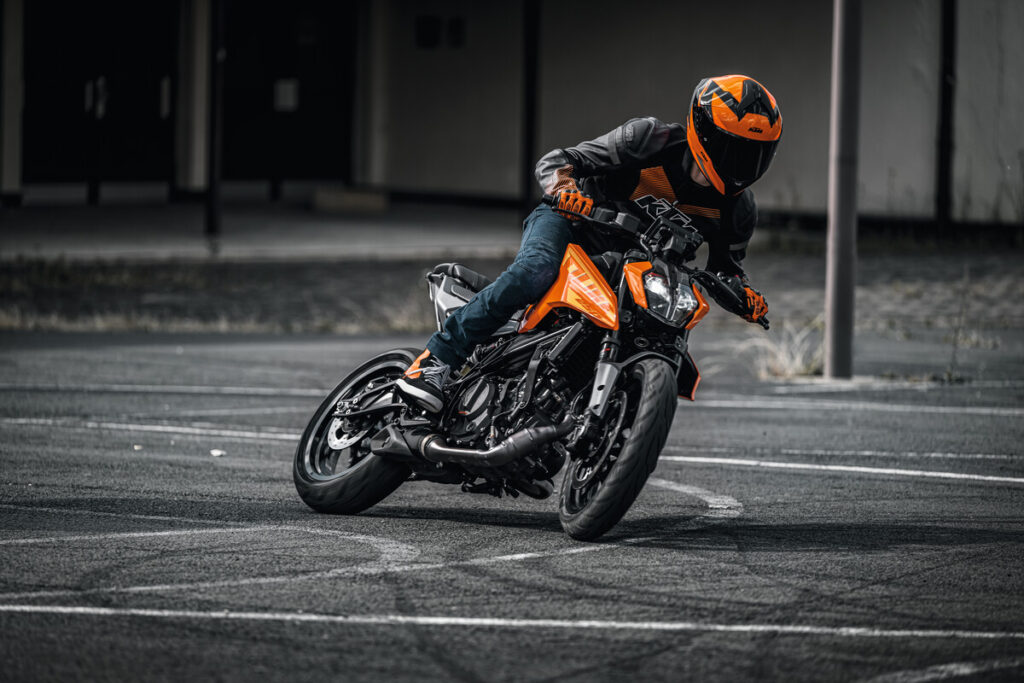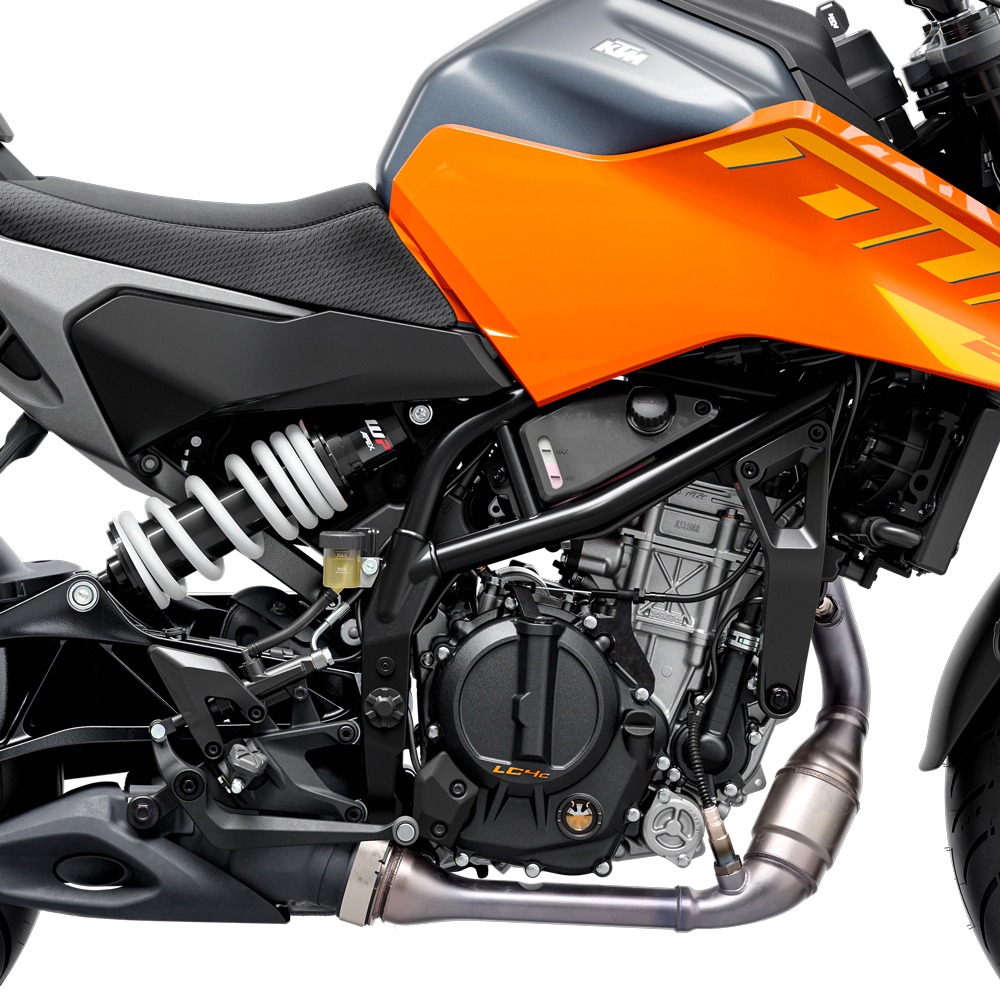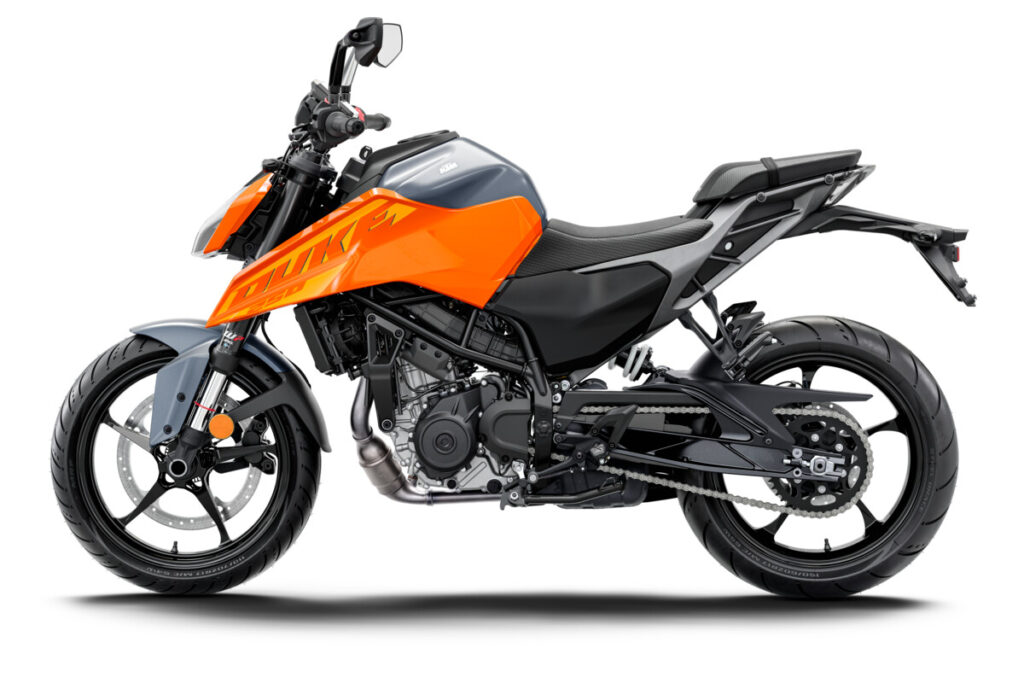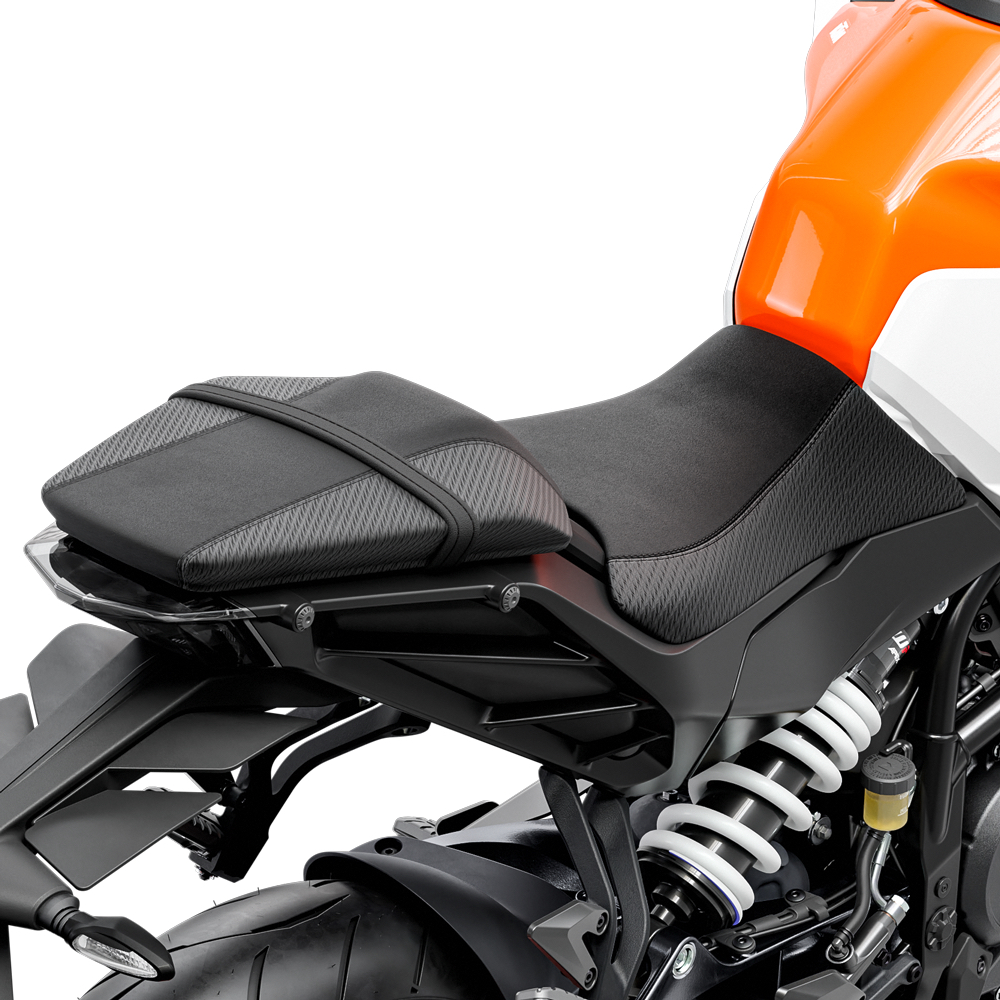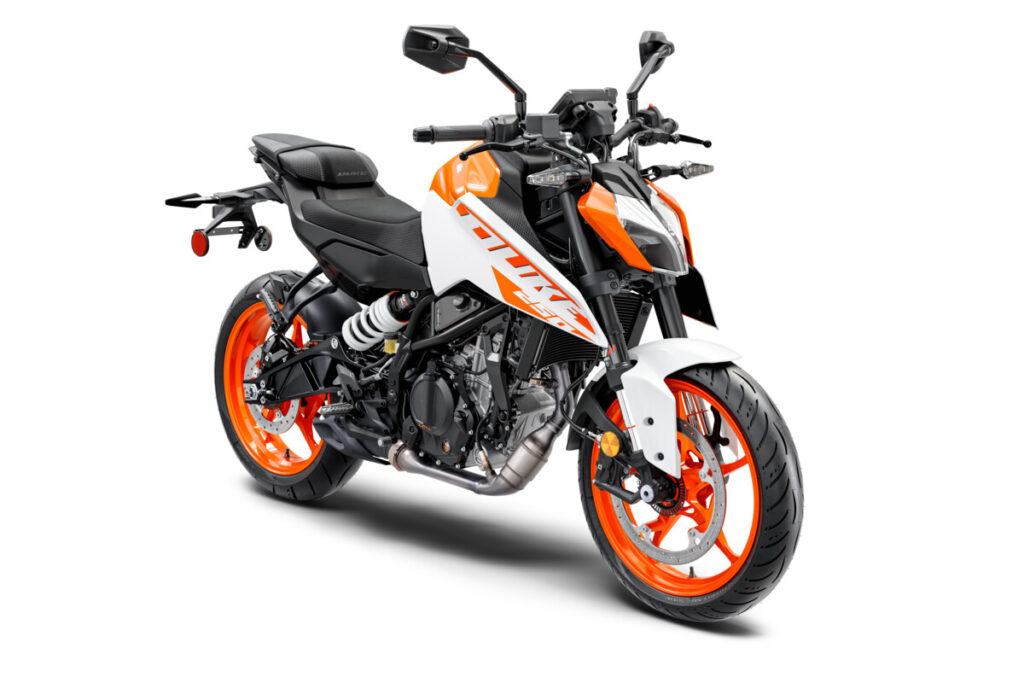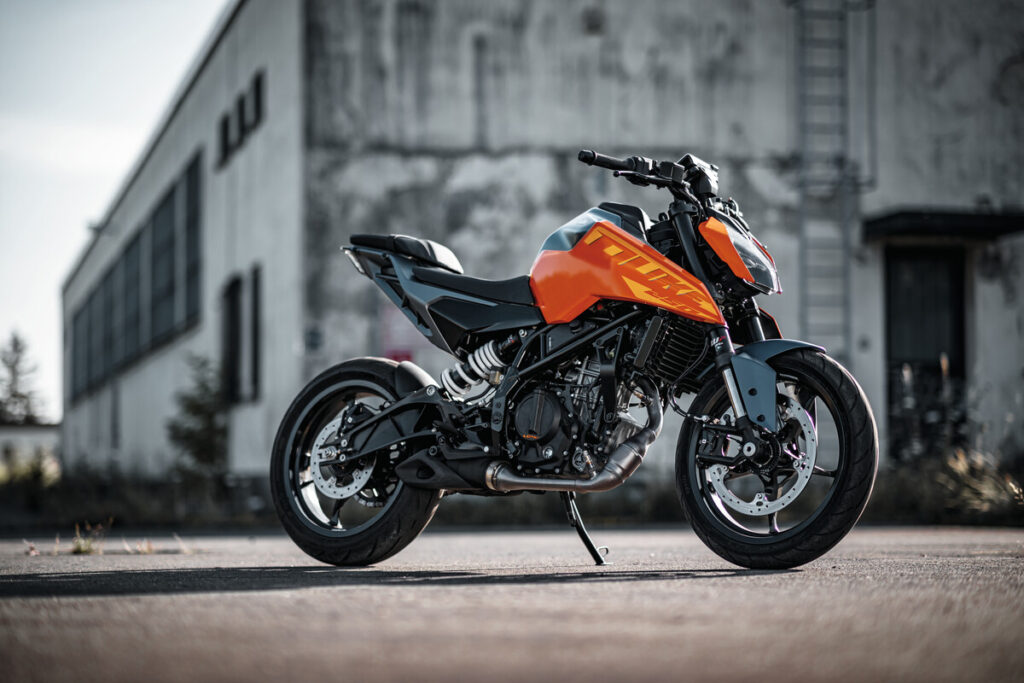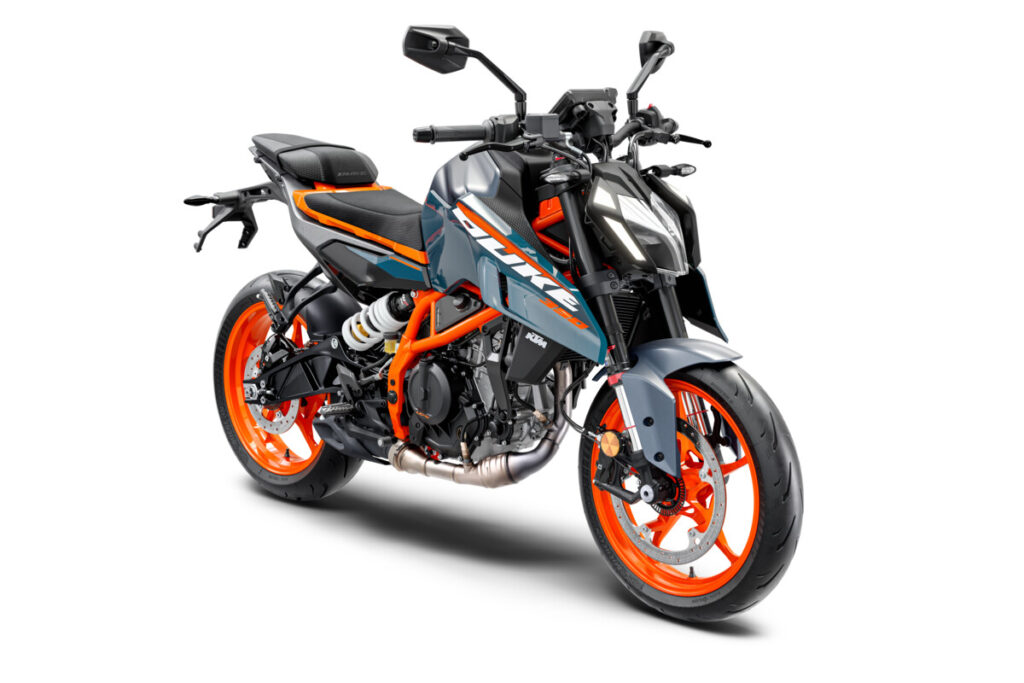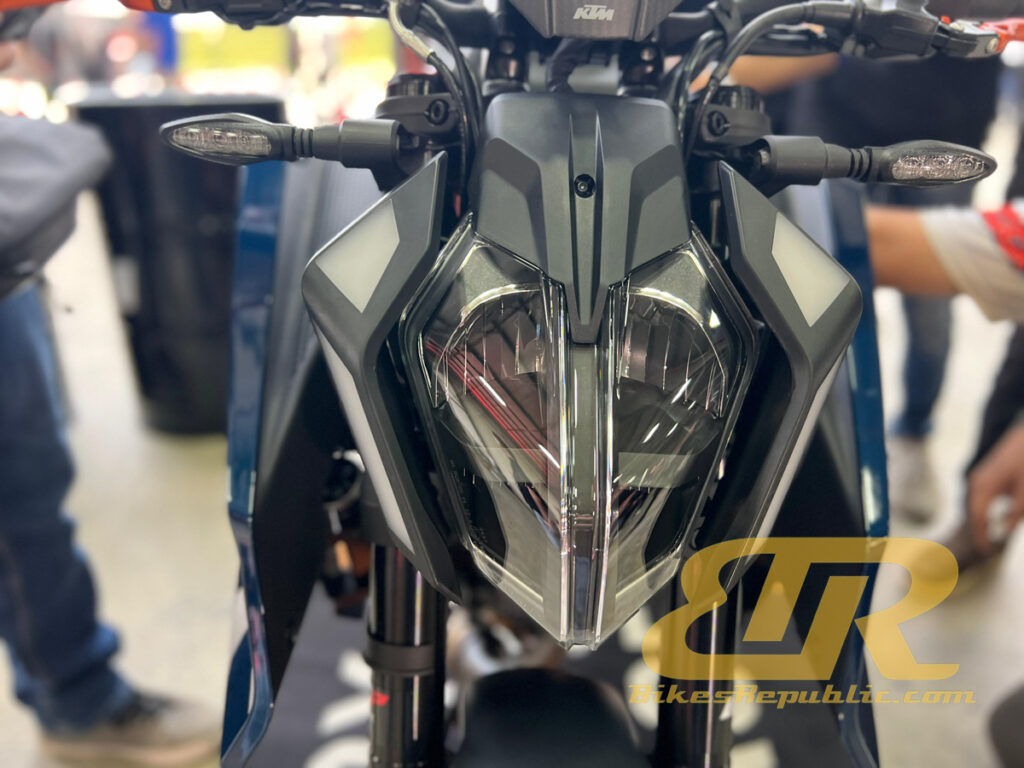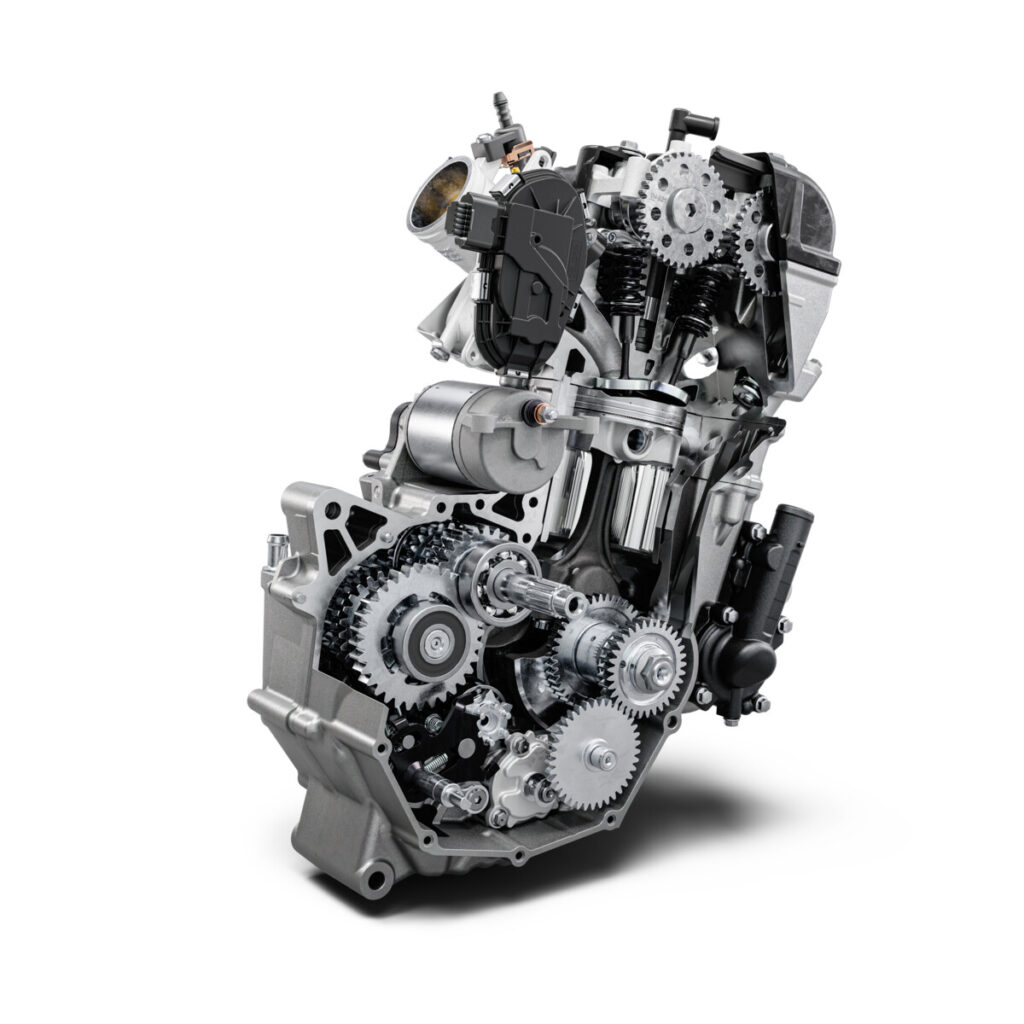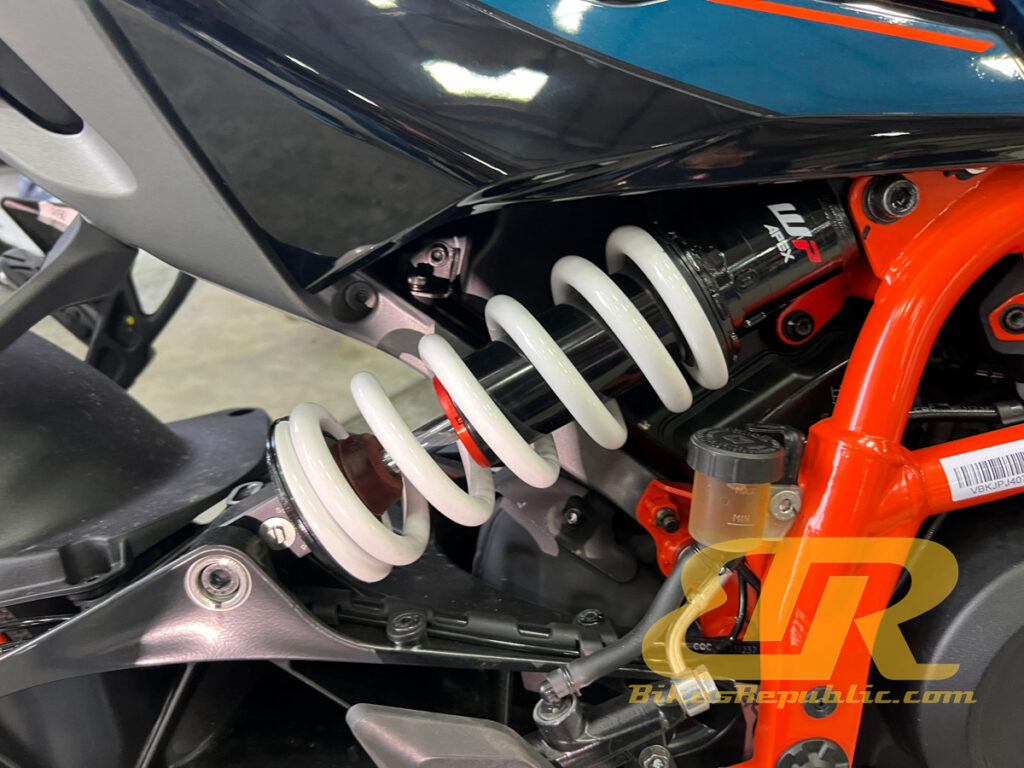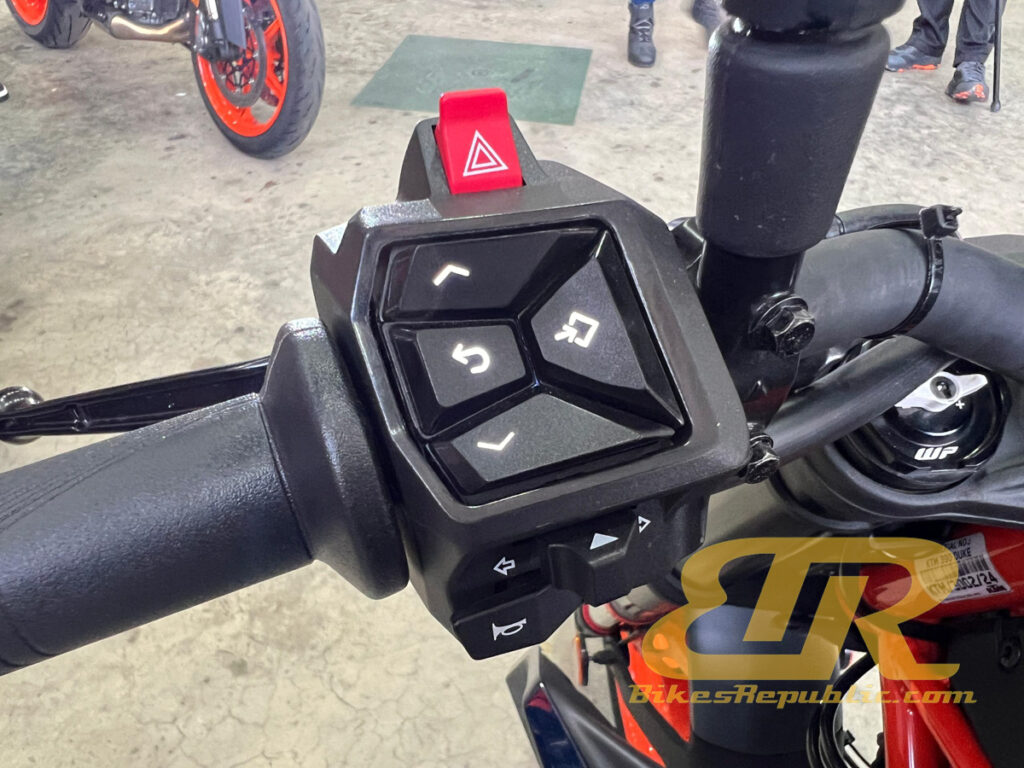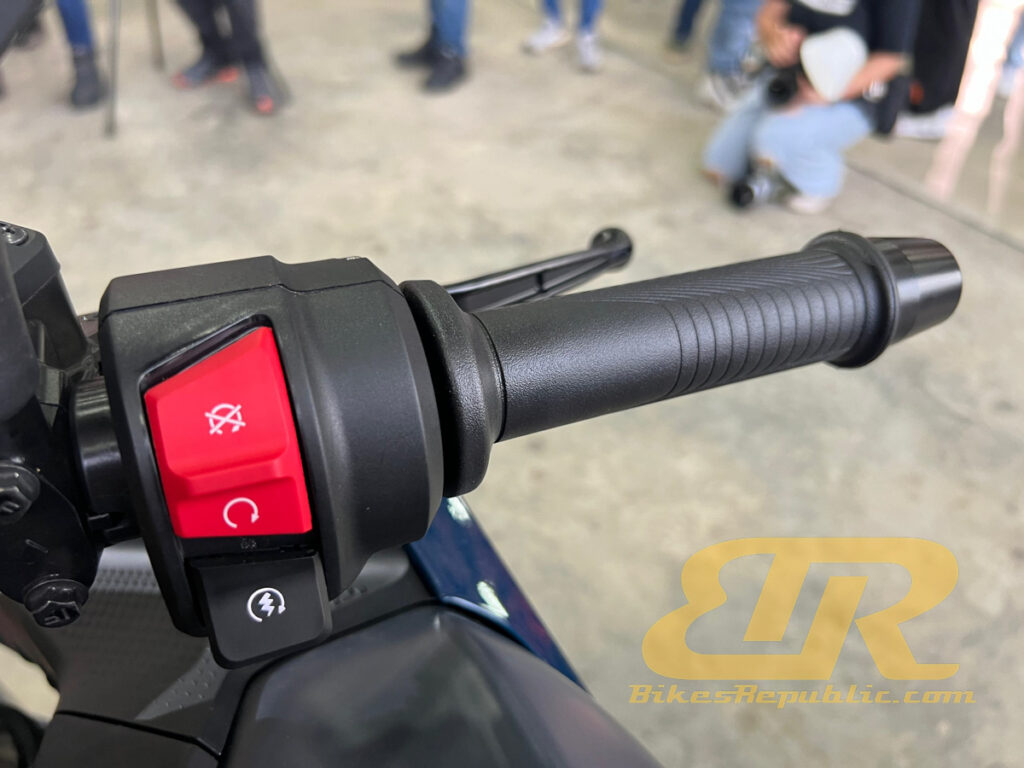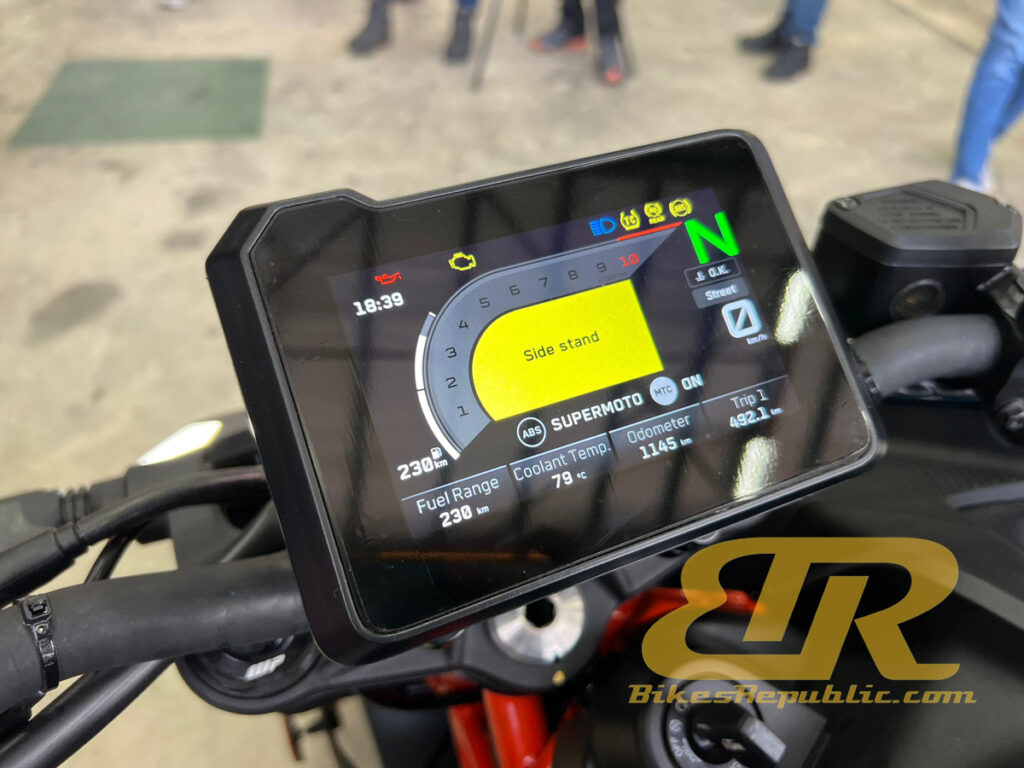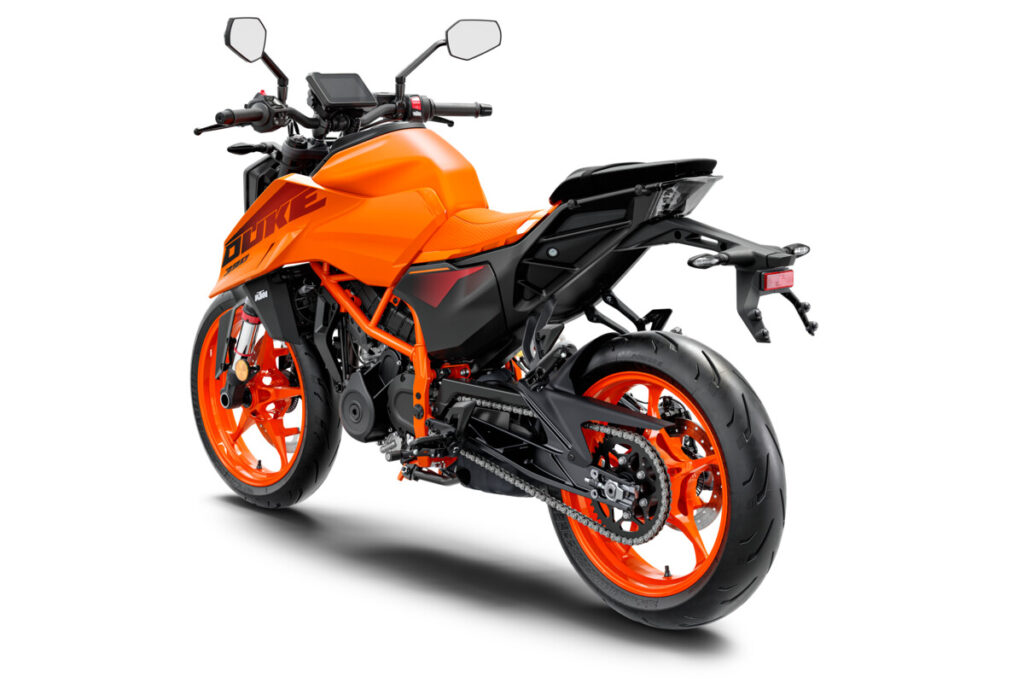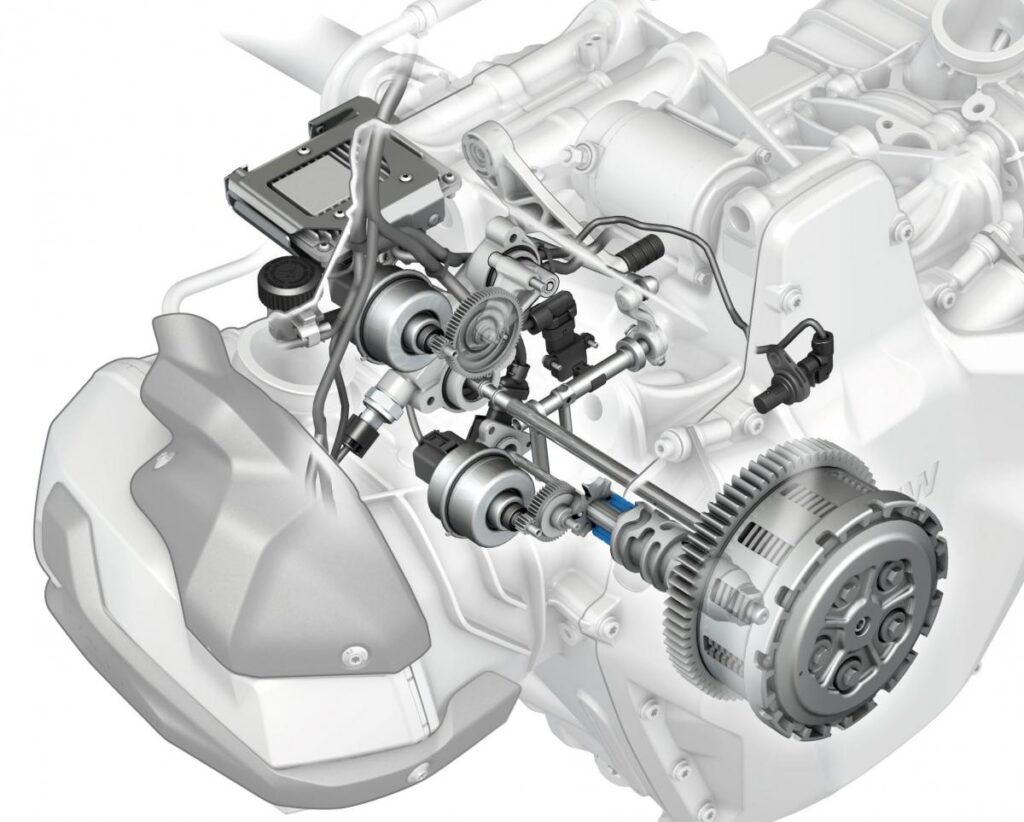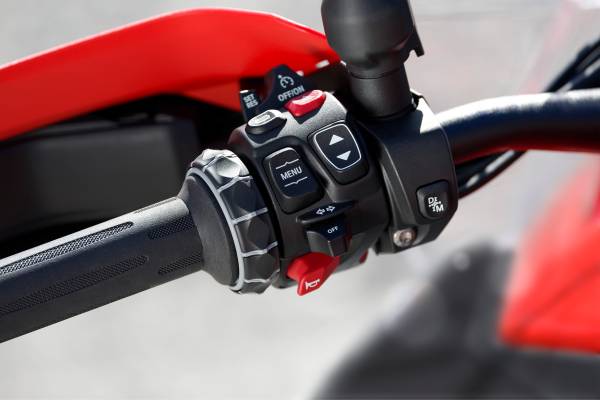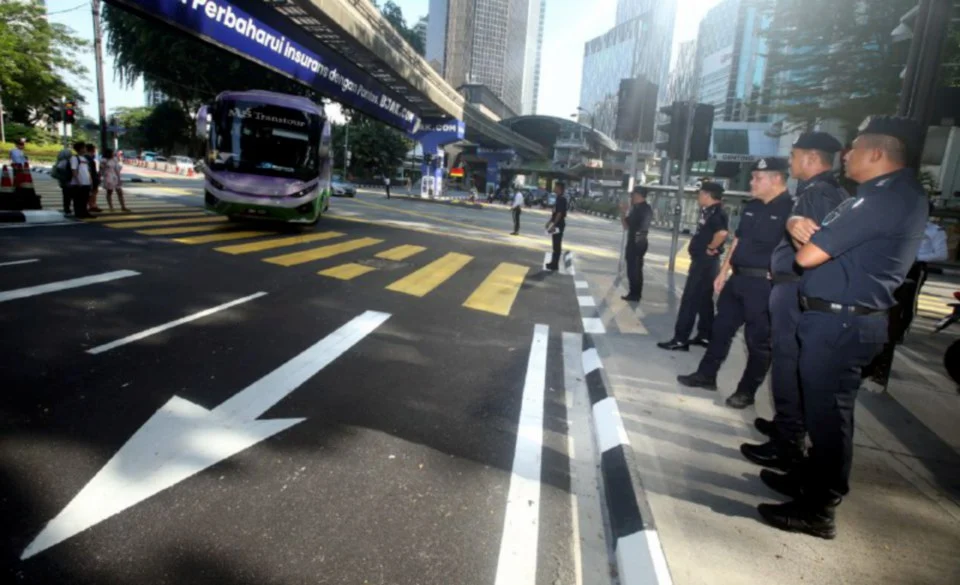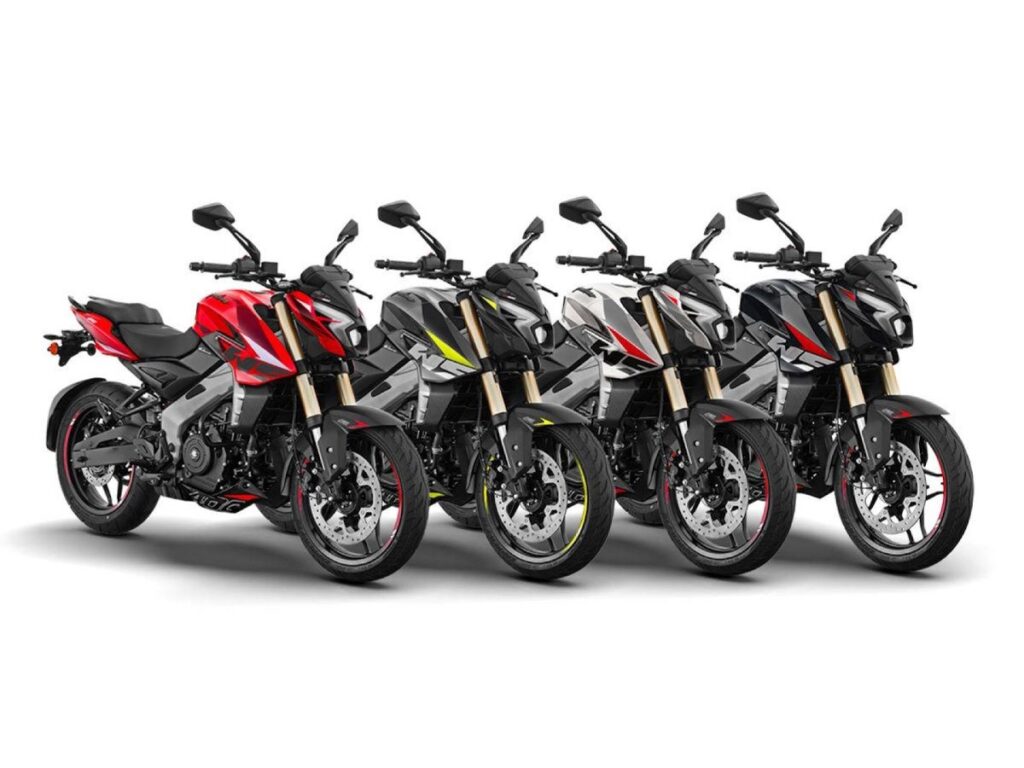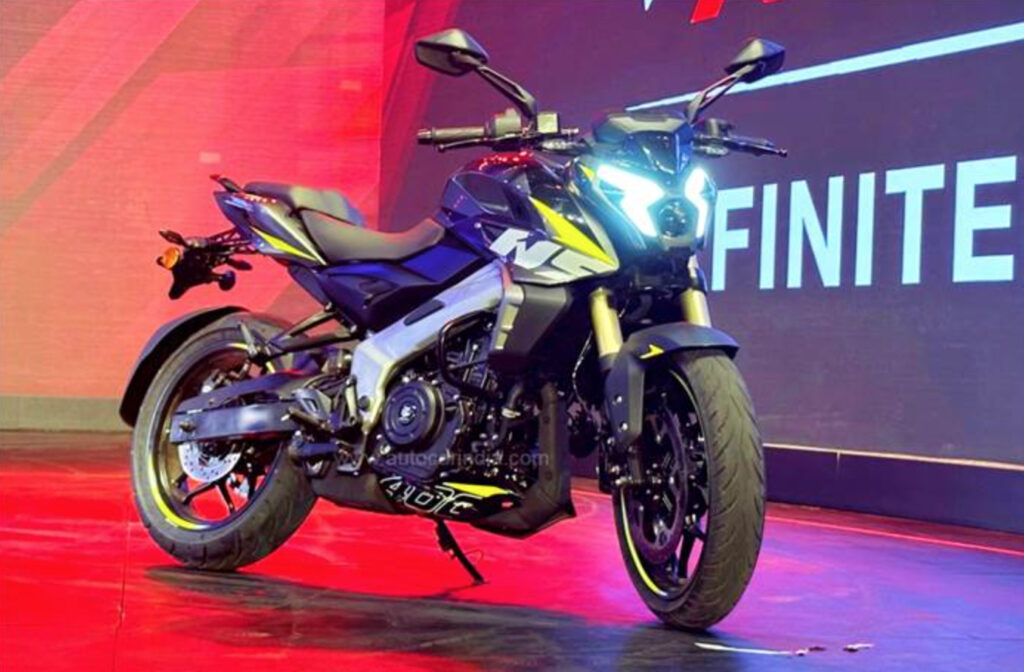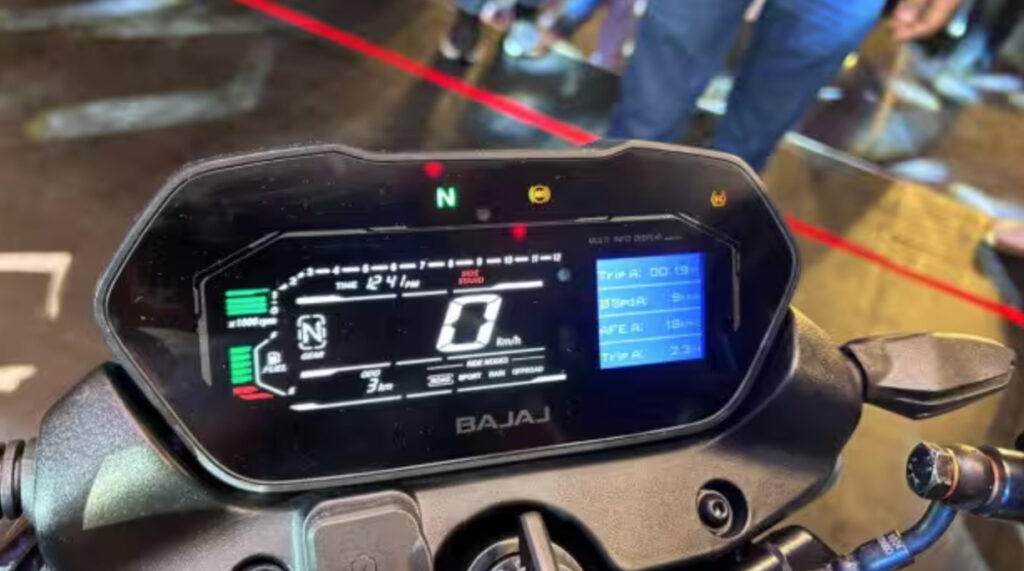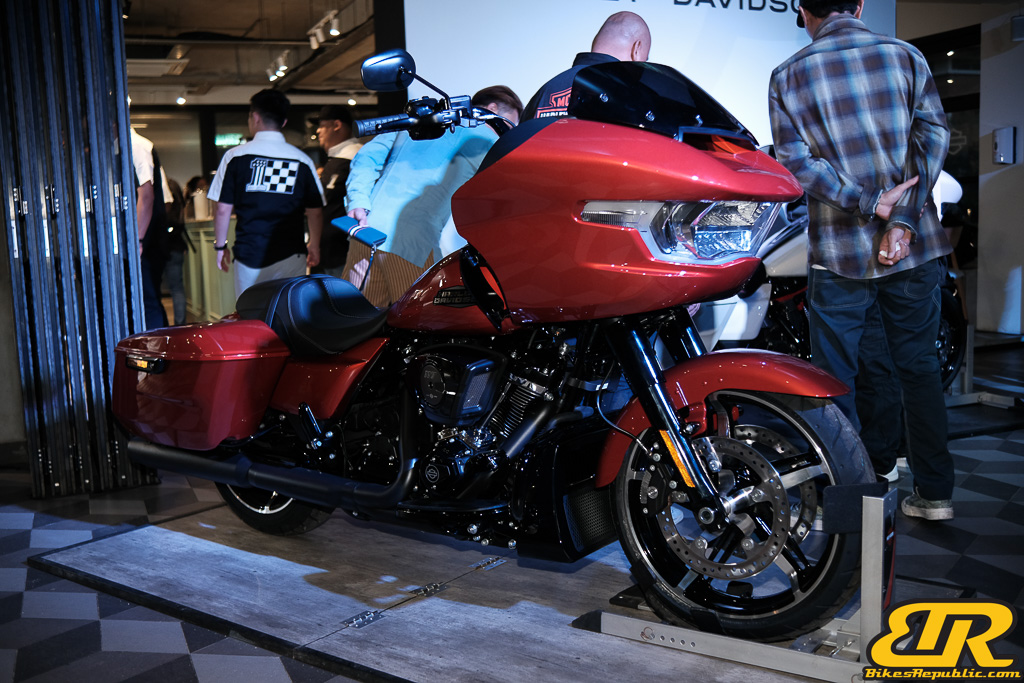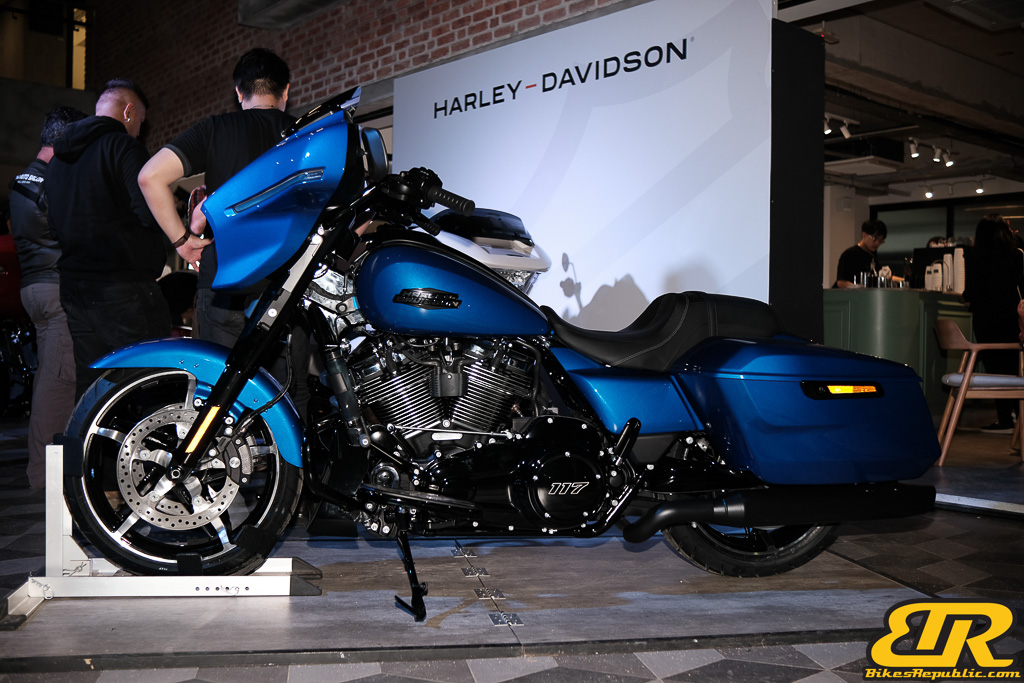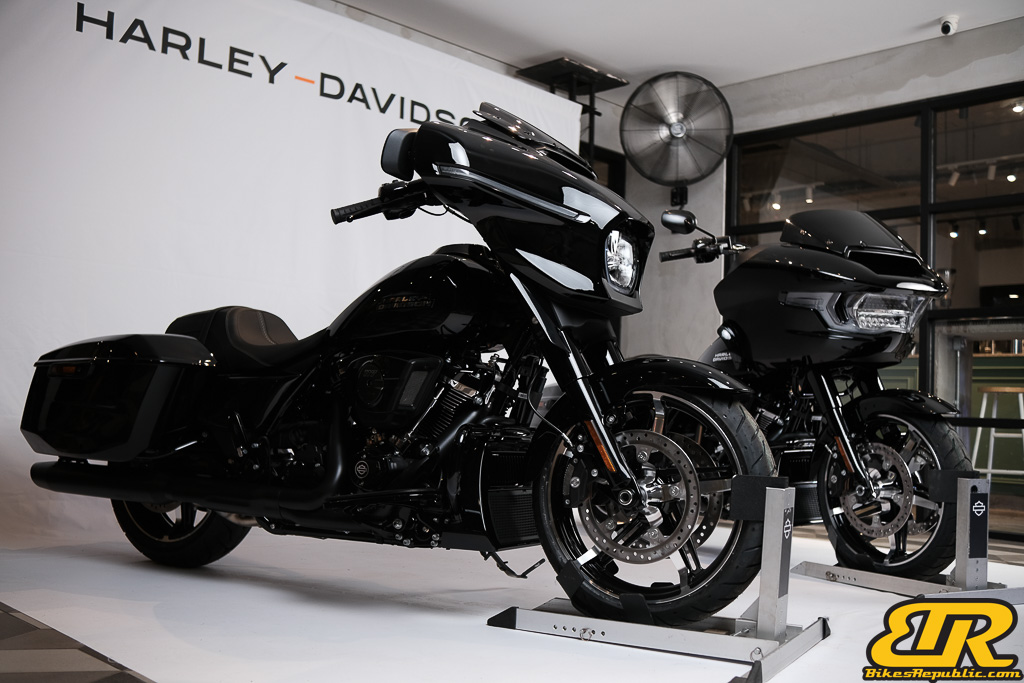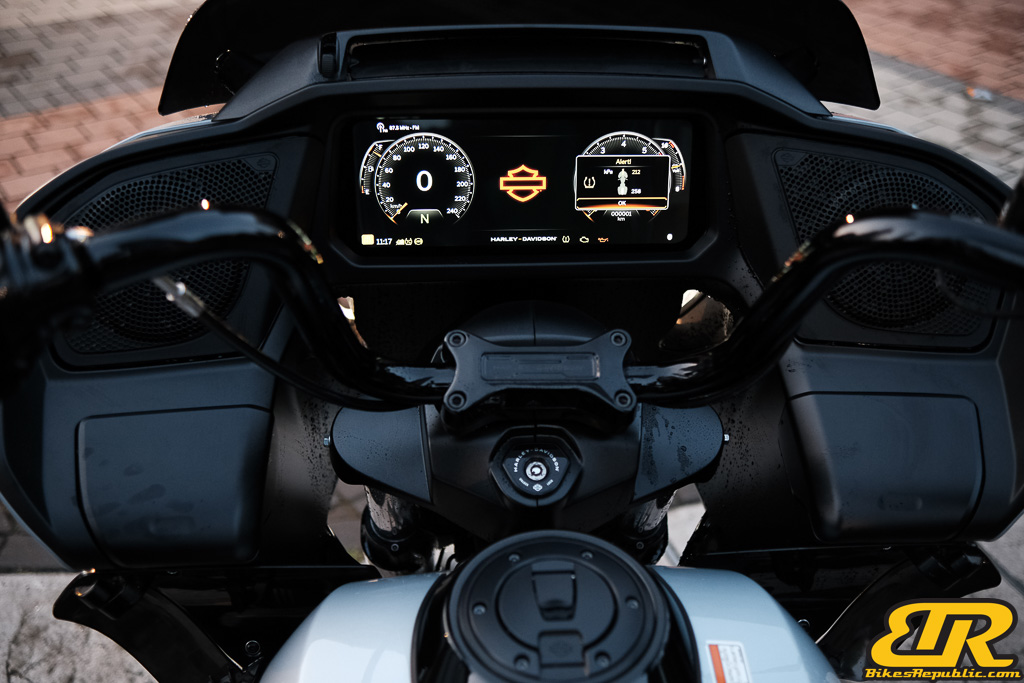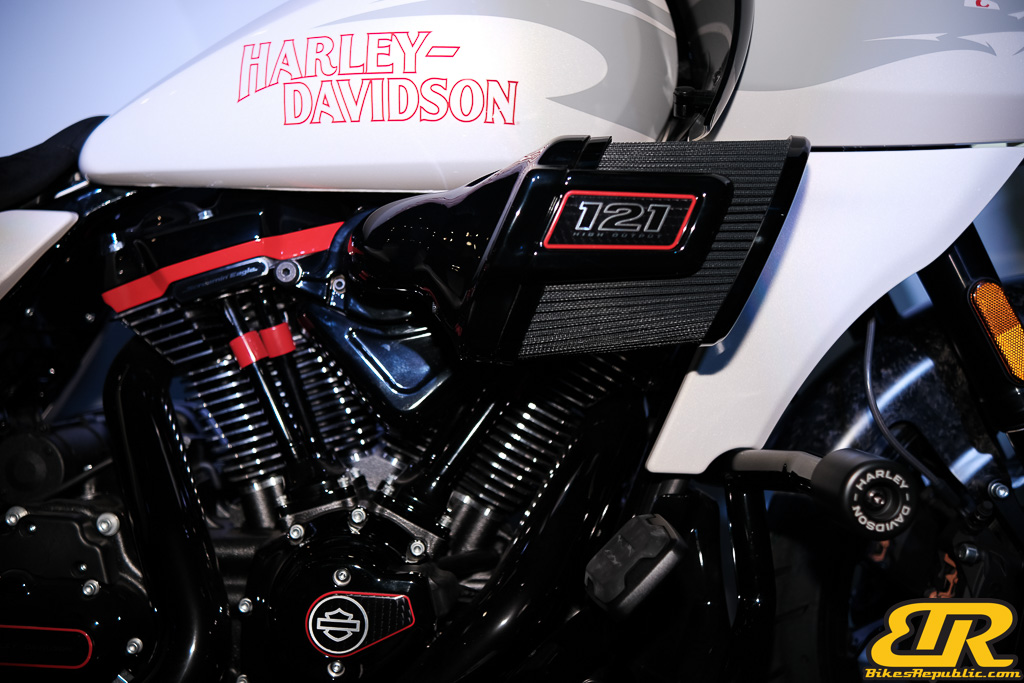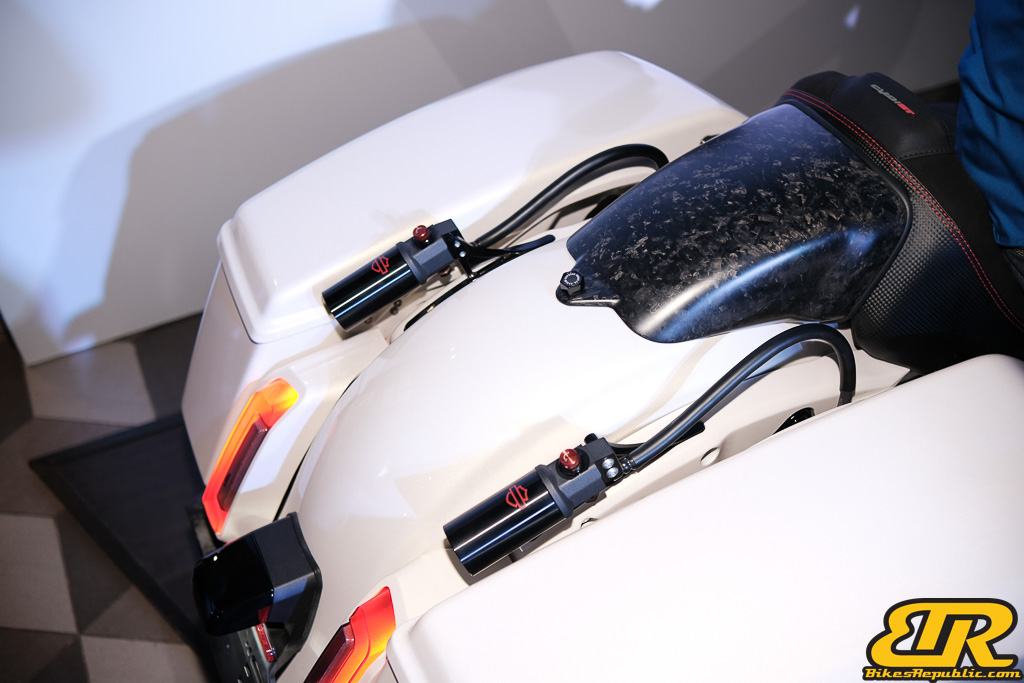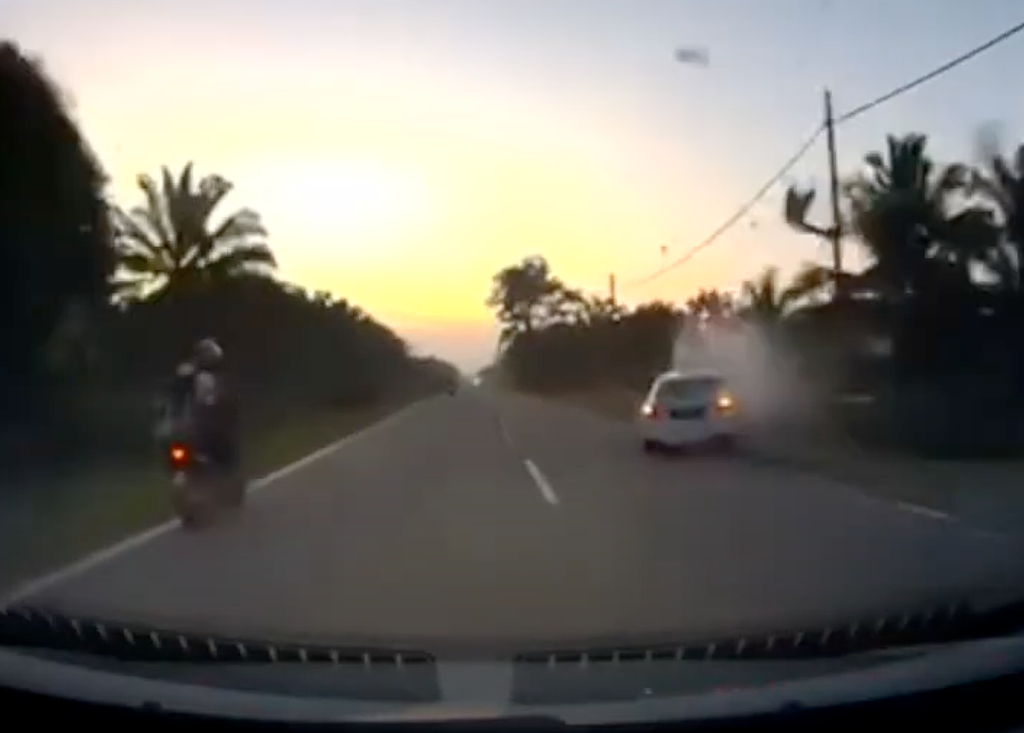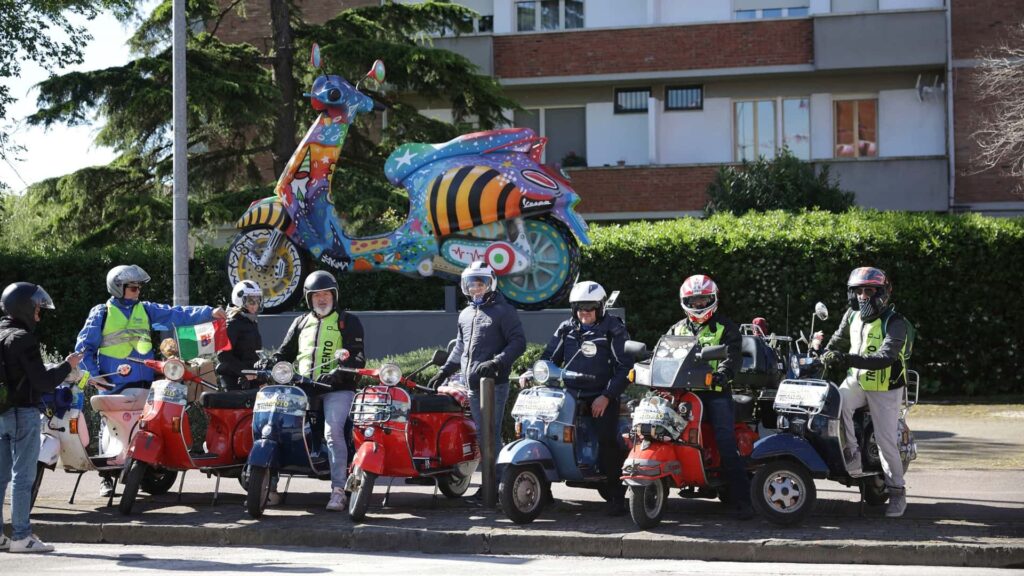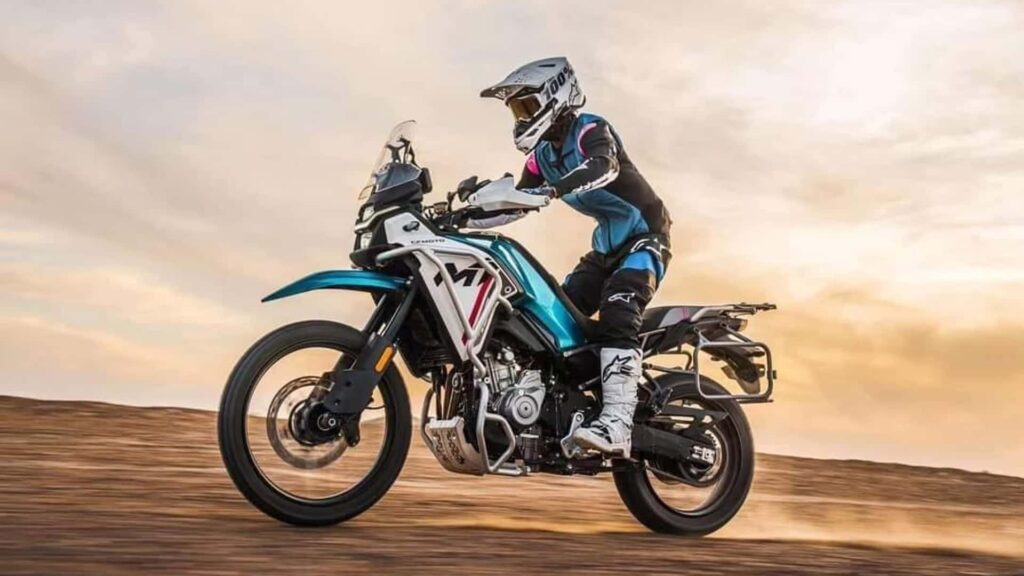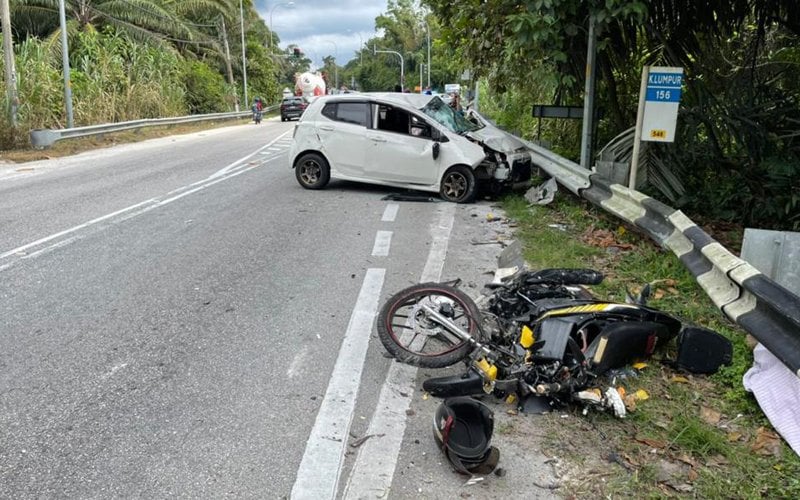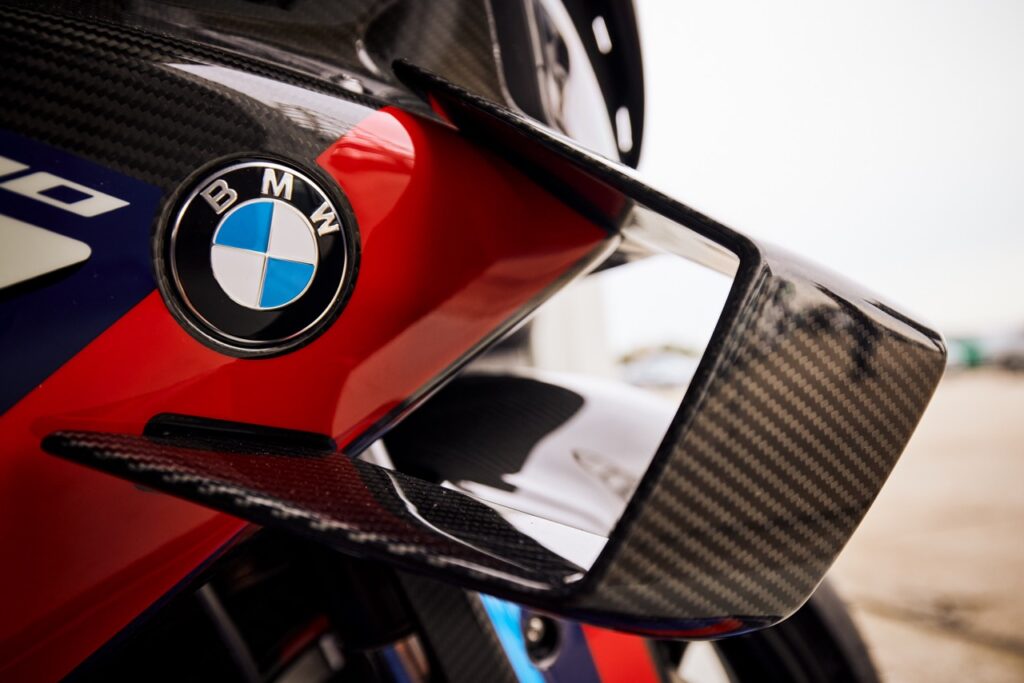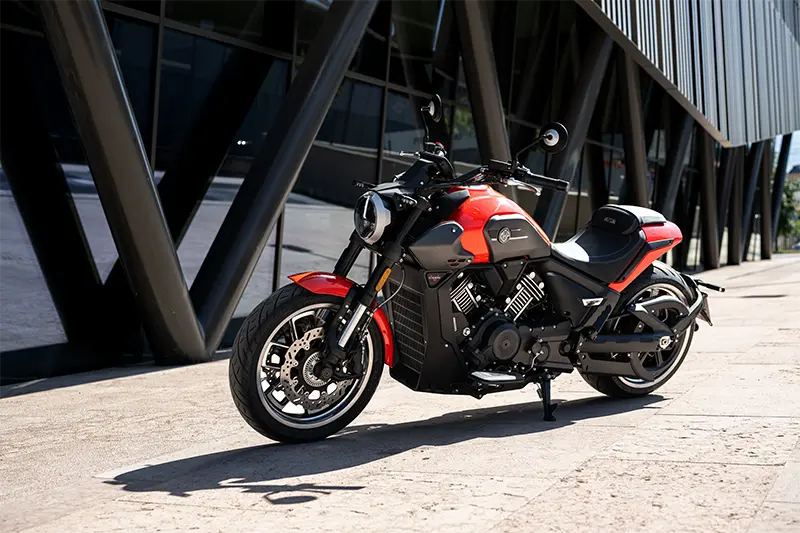The 2024 KTM 250 Duke was also launched in Malaysia, together with the 2024 KTM 390 Duke. And as with its bigger 390 sibling, the 250 Duke also sees many updates to make it virtually a new motorcycle altogether.
Highlights of the 2024 KTM 250 Duke
- Starting with the engine, there is no capacity bump, since it is already at 249cc.
- The engine dimensions remain the same, as with its maximum power output of 30.8 hp (23 kW) and torque of 25 Nm, despite being Euro 5.2 compliant.
- Its clutch is now KTM’s PASC (Power Assist Slipper Clutch), upgraded from the previous slipper clutch without power assist.
- The engine is nestled in the signature steel trellis frame, although the subframe is bolted on.
- Front suspension duty is handled by 43mm upside-down WP APEX big piston forks, with no adjustability.
- The rear monoshock is mounted to the ride side of the frame, and adjustable for preload only.
- A new curved aluminium swingarm to mount the shock increases the wheelbase.
- The front brake consists of a single 320mm disc checked by a four-piston caliper.
- The rear brake has a 240mm disc, and 2-piston floating caliper.
- Since there is a new subframe, its seats have been redesigned to be more supportive and plusher, especially for the pillion.
- The riders seat height is also adjustable between 800mm and 820mm.
- The headlamp has been redesigned to look similar to the 390 Duke’s although it does not have the same DRLs.
- All lighting are LED.
- The 2024 KTM 250 Duke has the same design language as the entire Duke range such the radiator panels, side panels, tank.
- Electronics wise, the new bike has a new 5-inch LCD screen with connectivity functions.
The 2024 KTM 250 Duke is priced from RM 22,500 with Quickshifter+.


